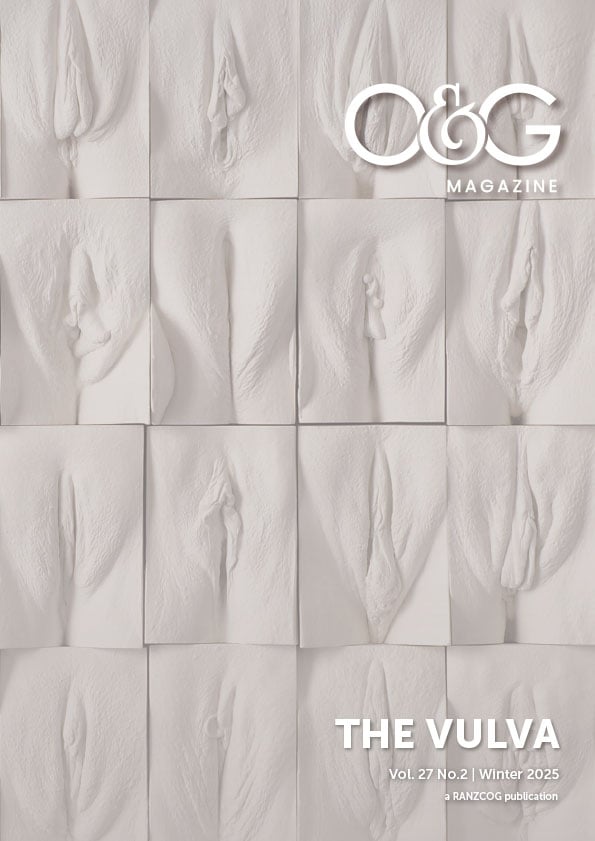The Vulva
Vol. 27 No 2 | Winter 2025
The Winter 2025 edition of O&G Magazine centres on the vulva—anatomically vital, often misunderstood, and still burdened by stigma. This issue explores the diagnosis and management of vulval conditions across the lifespan, including lichen sclerosus, benign lesions, paediatric presentations and postmenopausal changes. It also considers the social and psychological dimensions of vulval health, with contributions from psychosexologist Chantelle Otten, artist Jamie McCartney, and advocate Kath Mazzella OAM, whose personal story as a vulval cancer survivor underscores the importance of open dialogue to support earlier diagnosis. Together, these voices highlight the need for clearer language, greater cultural sensitivity, and more inclusive, confident care in a frequently overlooked area of women’s health.
FIND OUT MORE
FEATURED ARTICLE
College
In Conversation with Artist Jamie McCartney: The Great Wall of Vulva
British artist Jamie McCartney shares the story behind The Great Wall of Vulva, a striking sculptural project created from over 400 vulval casts. Featured on the cover of this edition, the work invites reflection on genital diversity, shame and representation, and highlights the unexpected role art can play in health education and clinical conversations.
MOST VIEWED ARTICLE
Feature
Caesarean section: step by step
A visual step-by-step guide to a caesarean section.

The College’s flagship
quarterly publication
quarterly publication
O&G Magazine features articles on the latest issues in the practice of obstetrics and gynaecology, written by experts of international standing. The magazine encourages the free flow of ideas, information and debate among the membership of the College and the broader community involved in women’s health.
BECOME A CONTRIBUTOR




